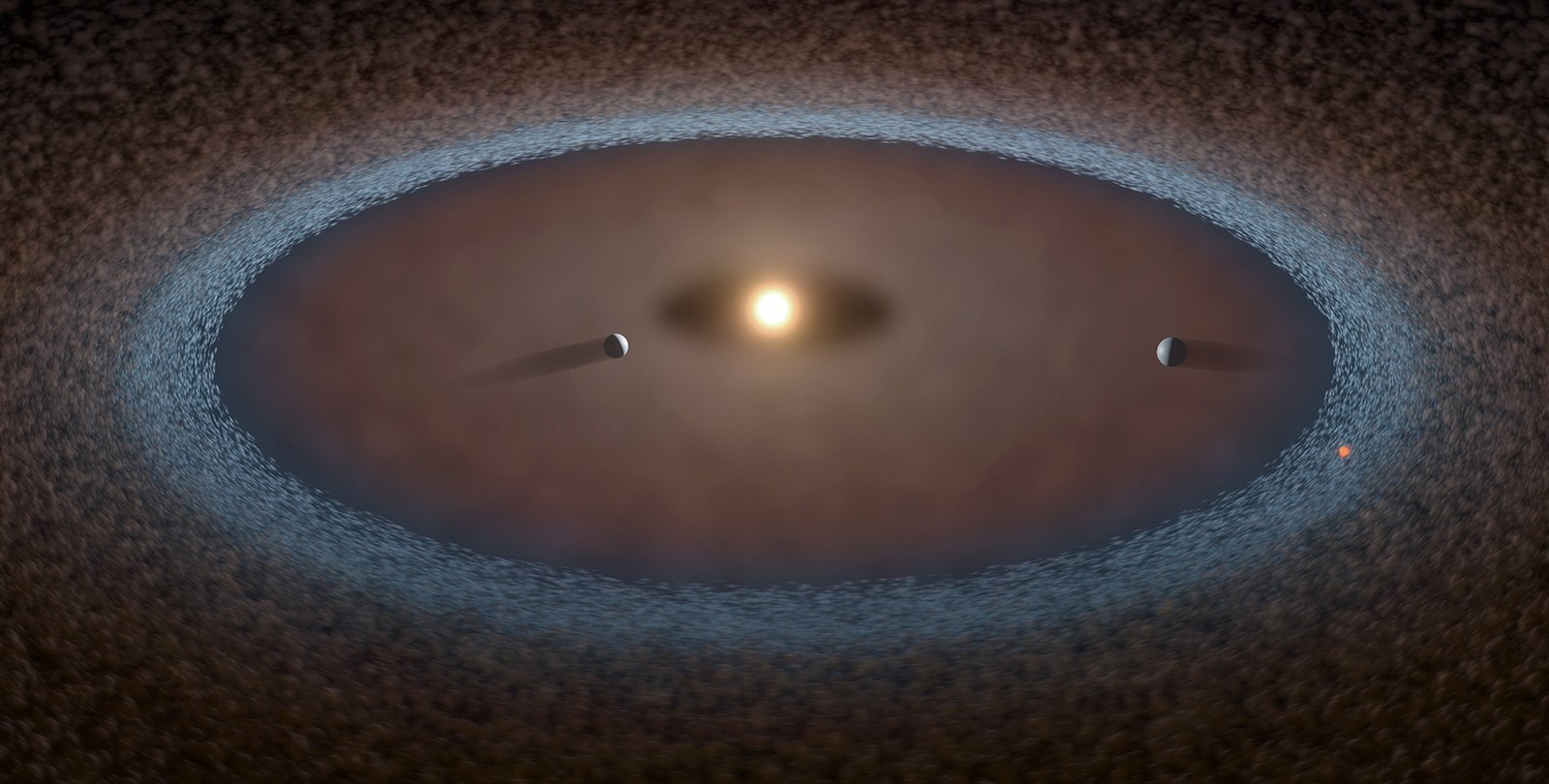Rocky planets from the planet factory
Why do rocky planets in a given star system usually look relatively similar? A new theory developed by Konstantin Batygin, professor of planetary science at Caltech, along with Alessandro Morbidelli of the Observatoire de la Côte d’Azur in France, may explain.
“With the increase in exoplanet observations over the past decade, it has become clear that the standard theory of planet formation needs to be revised, starting with the basics. We need a theory that can explain both the formation of terrestrial planets in our solar system and the formation of self-similar systems of super-Earths, many of which have a rocky composition,” Batygin says.
Planetary systems begin their life cycle as large rotating disks of gas and dust that condense over the course of a few million years. Most of the gas accumulates in the star at the center of the system, while solid material slowly coalesces into asteroids, comets, planets and moons. In our solar system, this gave rise to two different types of planets: the smaller, rocky inner planets closest to the Sun, and the outer, larger gas giants rich in water and hydrogen farther from the Sun. This probably happened in two distinct rings in the protoplanetary disk: an inner one where the rocky planets formed, and an outer one for the more massive icy planets (two of which-Jupiter and Saturn-later became gas giants).
Super-Earths, as the name implies, are more massive than Earth. Some even have hydrogen atmospheres that make them appear almost like gas giants. They are also often close to their stars, suggesting that they have migrated from more distant orbits to their current position.
“A few years ago, we developed a model in which super-Earths formed in the icy part of the protoplanetary disk and migrated to the inner edge of the disk, near the star,” Morbidelli says. “The model was able to explain the masses and orbits of the super-Earths, but predicted that they would all be water-rich. Recent observations, however, have shown that most super-Earths are made of rock, like Earth, even when surrounded by a hydrogen atmosphere. That was the death knell for our old model.” In the last five years, the story has become even stranger as scientists have studied these exoplanets and made an unusual discovery: While there are a variety of types of super-Earths, all super-Earths within a single planetary system are similar in terms of orbital distance, size, mass and other important characteristics. It looks as if there is virtually a planet factory that knows only how to make planets of a certain mass, and just churns them out one after another.
What process in such a factory could have produced not only the rocky planets in our solar system, but also uniform systems of rocky super-Earths? “The answer is related to something we found out in 2020,” Batygin says. At that time, Batygin and Morbidelli proposed a new theory for the formation of Jupiter’s four largest moons. Essentially, they demonstrated that for a certain size range of dust grains, the force pulling the grains toward Jupiter and the force (or entrainment) pulling those grains along in an outward gas flow completely cancelled each other out. This balance of forces created a ring of material that formed the solid building blocks for the later formation of the moons. The theory also states that the bodies in the ring grow until they are large enough to leave the ring by gas-driven migration. After that, they stop growing, which explains why the process produces bodies of similar size.
In their new work, Batygin and Morbidelli propose that the mechanism for planet formation around stars is largely the same. In the case of planets, the large-scale concentration of solid rocky material occurs in a narrow band in the disk called the silicate sublimation line – a region where silicate vapors condense and form solid, rocky pebbles. “If you’re a dust grain, you feel a considerable headwind in the disk because the gas is orbiting a little slower, and you’re spiraling toward the star; but if you’re in vapor form, you’re just moving outward, along with the gas in the expanding disk. So at the point where you go from vapor to solid, material accumulates,” Batygin says.
The new theory identifies this band as the likely location for a “planet factory” associated with the Z
The new theory identifies this band as the likely location for a “planet factory” that may produce several similar-sized rocky planets over time. When the planets reach a sufficient mass, their interaction with the disk will pull them closer to the star. Batygin and Morbidelli’s theory relies on extensive computer modeling, but began with a simple question. “We looked at the existing model of planet formation, knowing full well that it doesn’t reflect what we see, and asked ourselves, ‘Which claim do we take for granted?”‘” says Batygin. “The trick is to look at something that everyone believes to be true for no good reason.”
In this case, the assumption was that solid material is scattered throughout protoplanetary disks. By jettisoning that assumption and instead assuming that the first solid bodies form in rings, the new theory can explain different types of planetary systems with a unified framework, Batygin said. If the rocky ring contains a lot of mass, planets grow until they move away from the ring, leading to a system of similar super-Earths. If, on the other hand, the ring contains little mass, a system much more similar to the terrestrial planets of our solar system is formed.
